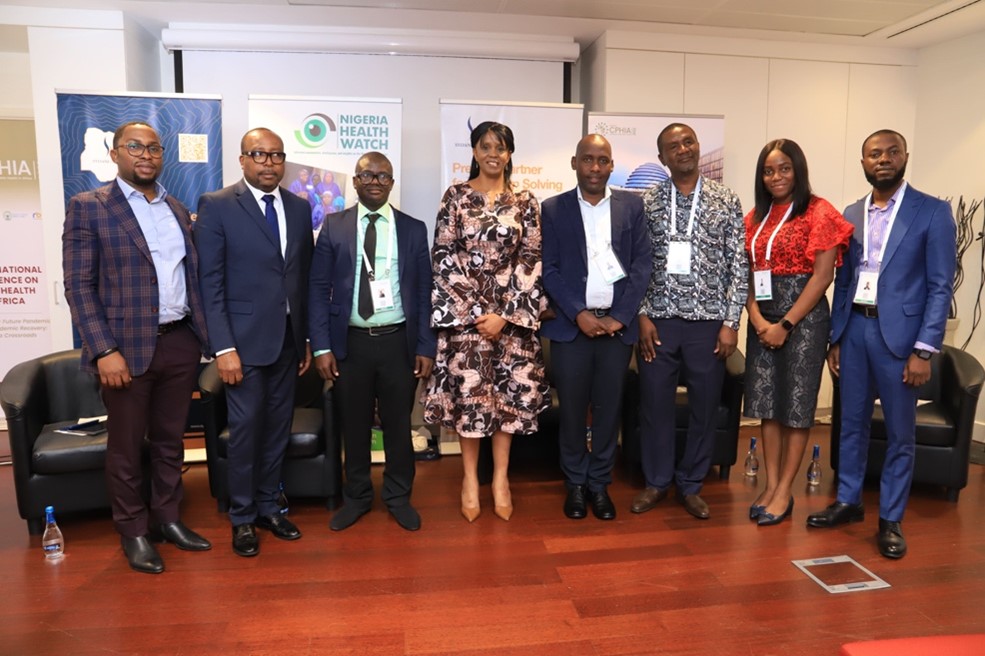By Vivianne Ihekweazu & Onyinye Oranezi (Lead writers)
“We’ve learned collectively that transparency, openness, and the communication of credible information to people in real-time results in functional responses by people”- Dr Mike Ryan, Executive Director of WHO Health Emergencies Programme
Communications during public health emergencies
The COVID-19 pandemic highlighted the significance of credible information and communication, as governments around the world were faced with combating not only the epidemic but also the infodemic of misinformation. It was crucial to disseminate lifesaving information because it enabled people to take precautionary measures to keep themselves and their communities safe.
The 2nd International Conference on Public Health in Africa (CPHIA 2022), with the theme “Preparedness for future Pandemic and Post-Pandemic Recovery: Africa at a Crossroad,” provided a platform for African leaders, policymakers, and stakeholders to share findings and lessons on public health across the continent, as well as opportunities for collaboration. In line with the conference track : The COVID-19 pandemic — Lessons Learned for Future Health Threats, Prevention, Preparedness, and Response, Nigeria Health Watch and Sydani Group hosted a side event, titled Health Communication in a Public Health Response that brought together key stakeholders working in public health communication in Africa.
The event’s goal was to discuss key lessons learned over the previous two years, innovations in risk communication and community engagement, the role of the media, and how lessons learned can be used to strengthen ongoing and future public health emergency responses.
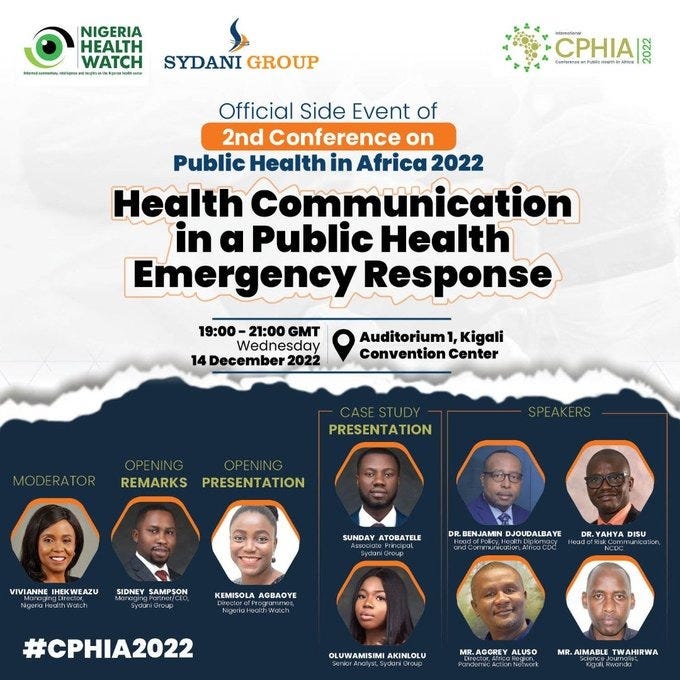
Elevating discussions about public health communications
Conferences focused on global health do not always include sessions that discuss public health communication. However, the most recent Global Health Security Conference in Singapore and the World Health Summit in Berlin both featured sessions on how to address communication gaps, improving global health communication and tracking the impact of scientific communication.
As part of WHO’s COVID-19 Strategy update, they advised governments to “empower all individuals and communities to own the response through communication, education, engagement, capacity building, and support.” Establishing trust and creating opportunities for partnership can be achieved through effective communication and community participation, which are the foundations of an efficient response to an infectious disease outbreak.
The role of communication in responding to outbreaks
The panellists taking part in the side event during the CPHIA, represented organisations that led communications efforts during the COVID-19 response and continue to play an active role in health communication, risk communication, and community involvement. They were able to share lessons on how to strengthen tactics for better health communication in a public health emergency response, by drawing on the experiences they had gained, while responding to the COVID-19 pandemic.
To pool knowledge and strengthen capacity building, Dr Benjamin Djoudalbaye, Head, Division of Policy, Health Diplomacy and Communication, Africa CDC, mentioned that “towards the end of February 2020, when we had our COVID-19 response strategy in place, we had our risk communication and community engagement strategy, we built capacity across the continent not limiting to just journalists, but all persons in the focal point of risk communication, individuals from member countries were trained and they cascaded it down to their countries”.
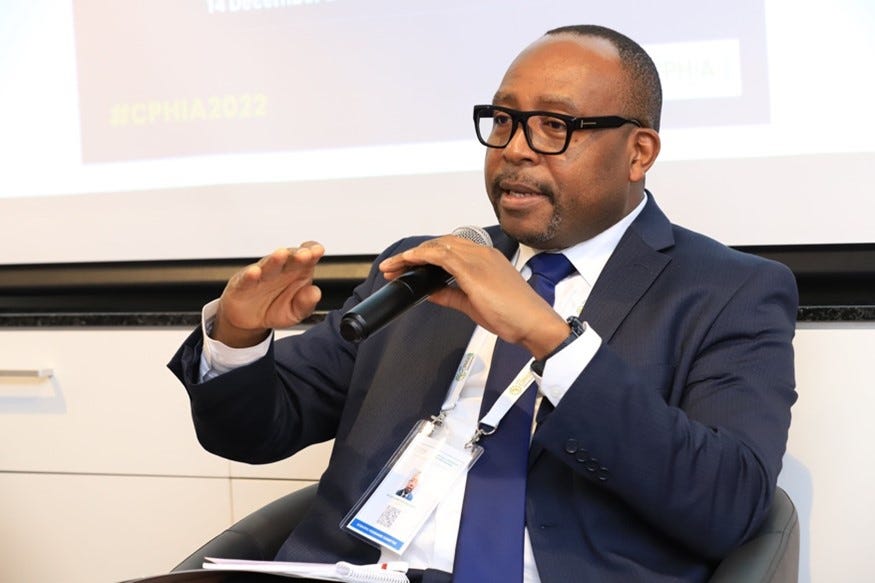
The #TakeResponsibility campaign implemented by the Nigeria Centre for Disease Control (NCDC) adopted a multisectoral approach to encourage citizens to play their part in limiting the spread of COVID-19. According to Dr Yahya Disu, Head of Risk Communications, NCDC, “the beginning of COVID-19 was characterised by widespread panic and anxiety”. The #TakeResponsibility campaign resonated with citizens across all levels and data was triangulated and used to make informed decisions about messaging, using multi-media channels. In addition, Dr Disu noted that NCDC “needed a strategy that would maintain trust and empower people to make informed decisions and give them reliable alternatives”.
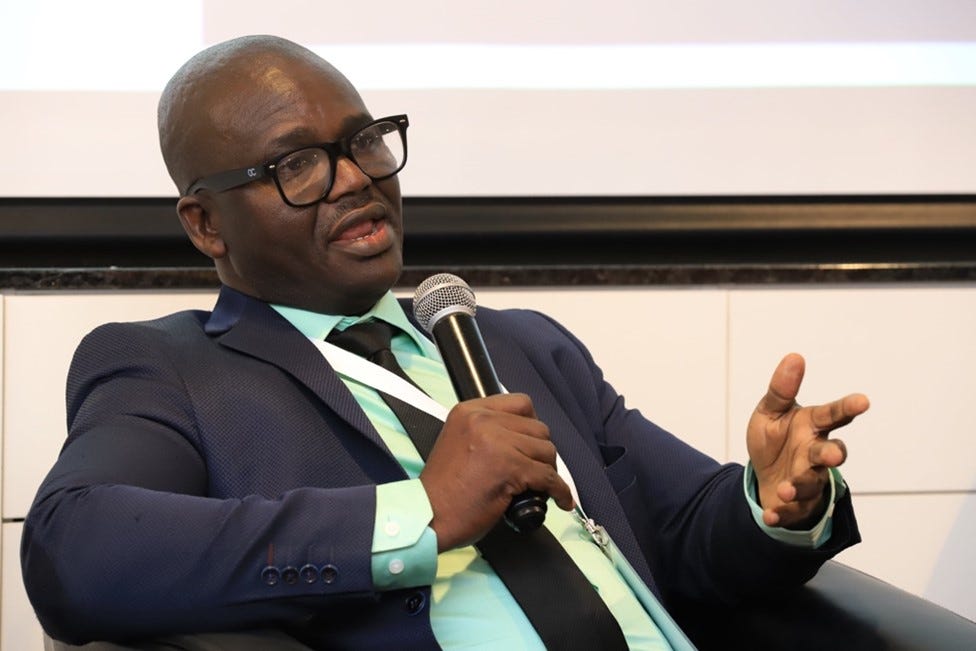
When discussing the use of evidence in communications during the COVID-19 response, Aimable Twahirwa, a science journalist based in Kigali, discussed how the lack of evidence-based publications led to public mistrust and the solution was to put problem solving at the centre of their narrative. “We had to work with the Rwanda Biomedical Centre to train journalists to understand scientific evidence-based data, to be able to interpret and share with the general public”.
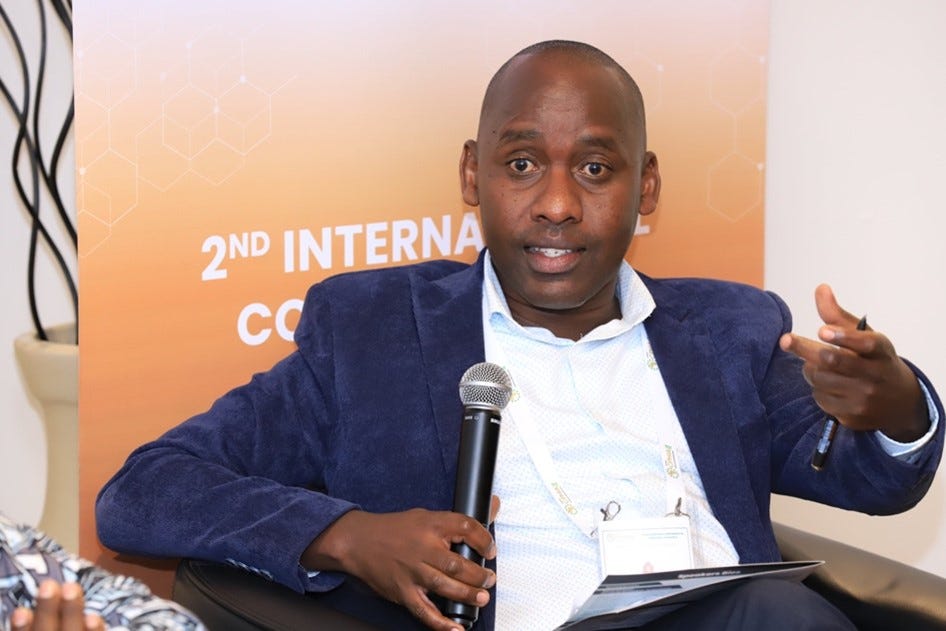
The power of collaboration, bringing together civil society organisations, the media and the public to advocate with one voice as a collective was vital for an effective public health response. According to Aggrey Aluso, Director Africa Region, Pandemic Action Network, “It’s not about being at the centre and pretending to know it all, it’s about bringing the collective and identifying who has what strengths and creating an enabling environment for that person or organisation to move forward and help support the shared vison”.

Evidence-based management of health misinformation in Nigeria
Digital media has been increasingly used as a tool for public health communication, and the proliferation of health misinformation has increased the importance of access to evidence-based information sources. Dr. Kemisola Agbaoye, Director of Programmes at Nigeria Health Watch, shared details about the #HealthFactCheckNaija project implemented by Nigeria Health Watch that adopted a multimedia approach, targeting different audiences to debunk misinformation using comics, infographics and videos to ensure engagement. “We are using a social media listening tool to actively listen to what people are saying across social media platforms and we curate the misinformation that is identified from that active listening and use evidence to debunk it and disseminate in multiple formats and on multiple platforms”. As social listening becomes more widely used, there will be a need to agree on the ethical guidelines and data governance issues that may arise from the data collection.
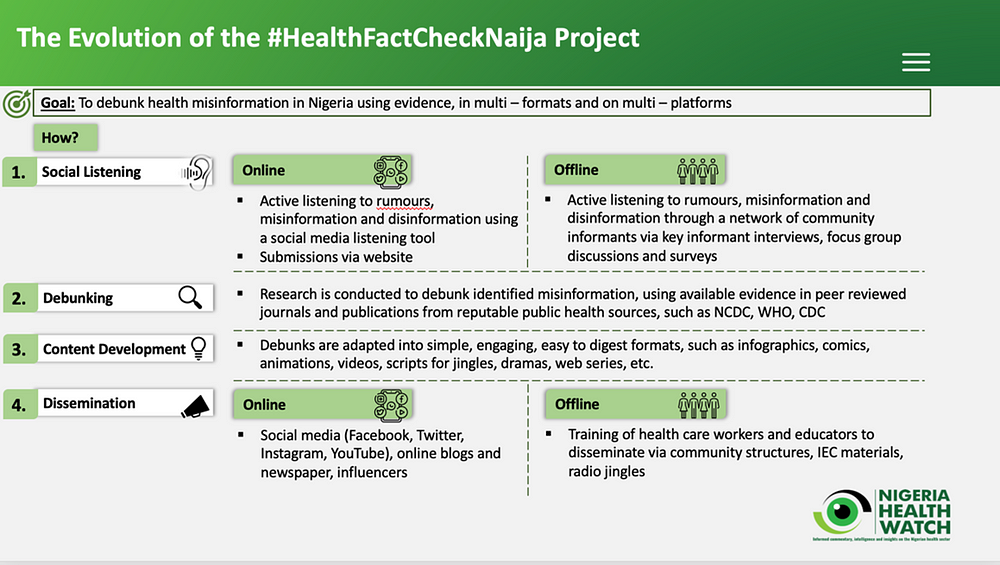
Modern communication channels are less accessible to people in Nigeria’s rural areas, and according to the World Bank, approximately 36% of the Nigerian population use the internet. As a result, community engagement is an essential component of any public health response, so community influencers were engaged to help counter misinformation. “We identified and trained community listeners in Niger State, Nigeria, and they went into the community and told us what the community people were saying about key health focus areas including immunisation, polio, maternal and child health issues as well as sexual and reproductive health.
Lessons learned for future responses
Misinformation and disinformation have accompanied public health emergencies, so trust can only be built through effective health communication to inform and keep pace with health information flows. People now have access to a variety of information sources as a result of the democratisation of information.
As a result, appropriate partnerships with the media, government institutions, technology platforms and other social media platforms must be established, promoted, and sustained at all levels. These platforms are critical in disseminating accurate health information, which is crucial in preventing the spread of misinformation during public health emergencies. Various lessons were learned across the African continent in responding to the COVID-19 pandemic and strengthening journalists’ capacity to report on public health emergencies greatly helped the public health response.
Unless there is a robust and clear flow of communication from public health institutions to the community level, misinformation and disinformation will continue to be a major challenge in responding to public health emergencies.


